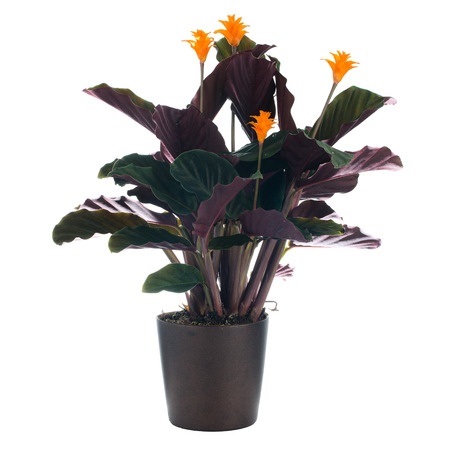





This species loves heat and humidity, but dislikes direct sunlight. Keeping it in your garden in temperate regions is not a good idea and it will require less work if kept indoors.
The plant is also known for letting their owners know when to go to bed - its leaves close up in the evening. Even without its flowers Calathea Crocata looks spectacular.
Flowering: The plant comes from Maranta family, with many kinds of Calathea, but Calathea Crocata is special due to its beautiful flowering.
The name 'Eternal Flame' comes from the yellow and orange flowers that resemble a flame. They grow on the top of the stems, a little higher than the leaves. Their sepals are rose - red and are not clearly visible among the yellow-orange bracts.
The flowers last 2-3 months.
Foliage: As mentioned before this species looks spectacular even without its yellow flowers. The leaves are metallic green on the outside with purple hues and brown undersides. Similar to other kinds of Calathea they are slightly wrinkled.
Displaying and growing: Some like to display the plant on its own when it is in bloom. It looks really nice on a table. However, it will look great with other plants that require similar care.

Pests: Check for red spider mites every now and then. Use a magnifying glass as the mites are small and are hard to spot.
Browning leaves: As mention before, this is a result of a wrong watering.
Withering leaves: The leaves can wither at the edges. This might be caused by too much calcium in the water (a good solution to this is to use rain water for watering), the air in the room is too dry, or the plant hasn't had enough, or has had more than enough of water.
Copyright © www.100flowers.win Botanic Garden All Rights Reserved